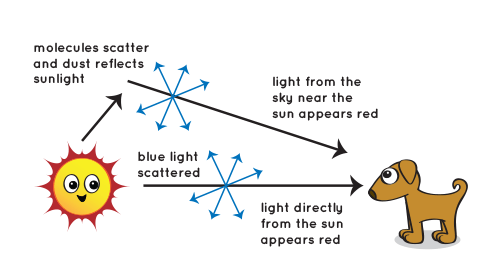Have you ever wondered why the sky is blue? The answer lies in the way that light waves interact with the atmosphere. In this article, we will explore the science behind why blue light scatters more than other colors and how it affects our daily lives.
What is Blue Light?

Blue light is a type of visible light that has a shorter wavelength and higher energy than other colors in the visible spectrum. It is found in natural sunlight, as well as in artificial sources such as electronic devices and LED lights. While blue light is essential for regulating our sleep-wake cycle and mood, overexposure to blue light can have negative effects on our health.
Why Does Blue Light Scatter More?
The reason why the sky appears blue is due to a phenomenon called Rayleigh scattering. When sunlight enters the Earth's atmosphere, it is scattered by gas molecules and tiny particles in the air. Blue light has a shorter wavelength than other colors in the visible spectrum, which means it is more easily scattered by these gas molecules and particles. As a result, the blue light is scattered in all directions and dominates the color of the sky.
It is important to note that this scattering effect is not limited to the sky. Blue light can also be scattered by water droplets in the ocean and air pollution, which can lead to hazy or blue-tinted landscapes.
How Does Blue Light Affect Our Health?

While blue light is essential for regulating our sleep-wake cycle and mood, overexposure to blue light can have negative effects on our health. Blue light can suppress the production of melatonin, a hormone that regulates sleep, and disrupt our circadian rhythm. This can lead to difficulty falling asleep, daytime fatigue, and other sleep-related problems.
Overexposure to blue light can also cause digital eye strain, which is characterized by symptoms such as dry eyes, headaches, and blurred vision. Blue light can penetrate deep into the eye and damage the retina, which can lead to age-related macular degeneration and other eye diseases.
How Can We Protect Ourselves from Blue Light?

There are several ways to protect ourselves from the negative effects of blue light. One way is to reduce our exposure to blue light by limiting our use of electronic devices, particularly at night. Another way is to wear blue light-blocking glasses, which can filter out harmful blue light and reduce digital eye strain.
Some electronic devices also come with built-in blue light filters, which can be turned on to reduce the amount of blue light emitted by the screen. There are also software programs available that can adjust the color temperature of our devices to reduce blue light emissions.
Conclusion
In conclusion, blue light scatters more than other colors due to its shorter wavelength and higher energy. While blue light is essential for regulating our sleep-wake cycle and mood, overexposure to blue light can have negative effects on our health. By reducing our exposure to blue light and taking steps to protect our eyes, we can minimize the negative effects of blue light on our health.